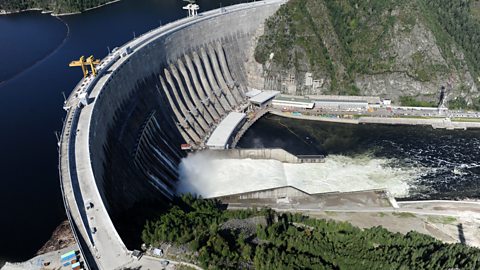Key facts
Biomass is organic material from plants and animals. This can be used as a source of energy.
By-products from forestry, plants and animal waste from farms, even sewage and some waste from landfill can be burned as fuel or used to generate electricity.
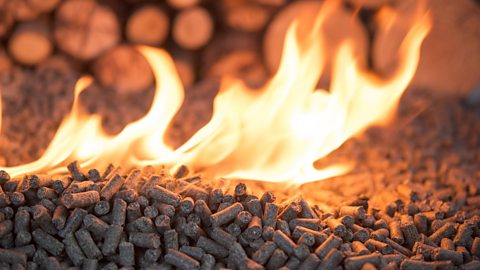
Biomass energy and its impact
Video
Find out how waste products from farms and forests can be turned into fuels.
The way we live just isn’t sustainable. We all use a lot of energy and we produce a lot of waste. Wouldn’t it be great if we could solve both of those problems with one solution? With biomass energy maybe we can.
Biomass is the burning of by-products from forestry, plants, and animal waste from farms to generate energy. Biomass can be made from sewage and animal dung that is dried into pellets and used as fuel. The main source of biomass in Scotland is from woodchips harvested from managed forests.
Opened in 2019, Millerhill Energy Recovery Centre near Edinburgh is diverting one-hundred and fifty-five tonnes of waste from landfill each year. This is treated to generate enough electricity to power thirty-two thousand homes and businesses. Compared to landfill, this is no waste of space.
Just like fossil fuels, such as coal or gas, biomass contains lots of chemical energy. Burning biomass in a power station transforms this chemical energy into heat energy. This is used to boil water to create steam to turn turbines. The turbines turn generators to generate the electricity we use at home, work, or school.
It’s good that we can turn waste products into energy. We produce a lot of waste, and biomass is one way of putting it to better use. It’s also more sustainable because we can grow crops to create biofuels rather than depending on fossil fuels.
The crops needed for biofuels also take up a lot of land. Land that could be used to grow food. The more biofuels you use, the more land you’ll need and the more nutrients will be used from the soil.
Biomass is still burned and still releases greenhouse gases that are bad for the planet.
George Loumakis, Energy lecturer, Glasgow Caledonia University: We cannot necessarily say whether it is clean or not. Now, let’s say you take some wood and you make it into pellets. When you burn off the pellets you are actually releasing carbon dioxide, which is the same stuff you release when you’re burning fossil fuels. As with fossil fuels as well, the main difference is that what you’re releasing when you’re burning biomass is what would be released either way when the biomass reached the end of its life naturally. If you take the wood, if you take the tree, the tree would eventually rot away and release the carbon back in the atmosphere or it would get eaten by and animal and that animal would then release the carbon back in the atmosphere.
As energy demand increases, we need to explore all options. Using existing waste feels like a good idea. It seems to solve a lot of problems but does it create too many of its own?
How biomass fuel works
Just like fossil fuelsFuels that come from the Earth. Fossil fuels are all old life forms that have decomposed and been compressed over a long period of time under ground or under the sea. Coal, oil and gas are fossil fuels., such as coal or gas, biomass contains lots of chemical energy. Biomass can be processed into different fuel sources:
- Liquid biofuels such as bioethanol can be used for cars and other transport, just like petrol and diesel.
- Solid biofuels such as wood pellets can be burned to heat homes and other buildings or to generate electricity.
- Biogas, often a mix of methane and carbon dioxide can burned for heating or to generate electricity.
Biomass power stations works in exactly the same way as fossil fuel power stations:
- Biomass is burned, giving off heat - chemical energy is transferred into heat energy.
- The heat is used to boil water to create steam.
- The steam expands and builds up enough pressure to turn turbineA turbine is a machine that turns the movement of liquid or gas into energy that can be used. In a simple turbine water or air push against turbine blades and spin them round. The spinning blades turn a long pole called a shaft. The shaft can then turn other pieces of machinery, such as a generator that is used to produce electricity. - heat energy is transferred to kinetic energy.
- The turbines turn generators which contain electromagnets. This creates a flow of electricity - kinetic energy is transferred into electrical energy
- Electricity is supplied to the grid for use at home, work or school.
Location factors
Like fossil fuels, biomass fuels are very portable.
Solid, liquid and gas biofuels can all be transported by road, rail or boat. In some placers biogas is transported through pipelines to where it is needed.
Sites for processing and burning biofuels are often located near where the source of fuel is grown, for example near timber forests or sugar cane plantations. This reduces the need for transport.
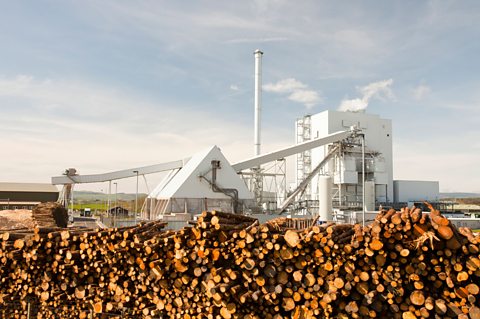
Steven's Croft power station near Lockerbie, Dumfries and Galloway is the largest biomass power station in the UK. The majority of the fuel it burns is waste product from the local timber industry.
Steven's Croft power station provides both electricity and heat energy for local homes and industry and also contributes electricity to the National Grid.

Combined heat and power stations that produce electricity and heat from burning waste tend to be located near the towns or cities where the waste is produced. They need to be near good transport links. Where there is nearby housing, the heat produced can be piped directly to them as part of a district heating system.
Case study: bioethanol in Brazil
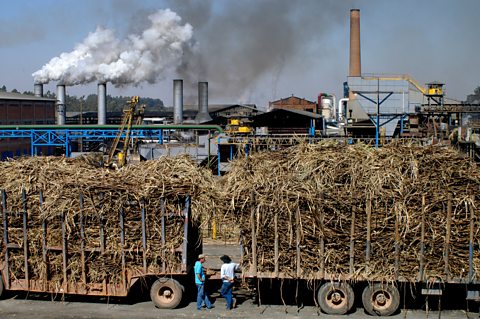
Sugars from plants can be converted into ethanol and carbon dioxide by a process called fermentationAnaerobic respiration which occurs in yeast and bacteria in which glucose is broken down into alcohol (ethanol) and carbon dioxide, releasing energy using enzymes in yeast. Ethanol is highly flammable; it is a store of chemical energy which is converted to different types of energy (including heat) when burned.
When ethanol comes from a plant it can be classed as a biofuel.
In some countries, such as Brazil, the source of sugar is sugar cane, which yeast can directly ferment into ethanol. Brazil have been using bioethanol as a fuel in cars since the 1970s. Brazil is a major producer of sugar cane so there is always plenty available to be turned into ethanol.
Bioethanol can be burnt in a car engine but some engine modification is needed. Modern petrol engines can use petrol containing up to 10% ethanol without needing any modifications, and most petrol sold in the UK contains ethanol.
In Brazil, they commonly use fuel that is 25% ethanol and 75% petrol although there are some cars that run on 100% ethanol.
This is one way of removing fossil fuelsFuels that come from the Earth. Fossil fuels are all old life forms that have decomposed and been compressed over a long period of time under ground or under the sea. Coal, oil and gas are fossil fuels. from modes of transport. This works successfully in Brazil because the climate is suitable for growing sugar cane and petrol is expensive and must be imported.

Sustainability of biomass fuels
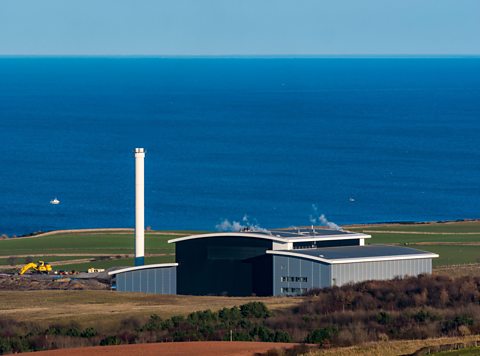
To develop a sustainable future you need to think about meeting today's needs and protecting the environmentĚý˛ą˛Ô»ĺĚýresources for the future.
Biomass fuel can be used in very similar ways to fossil fuels, so it could help cut down on the amount of fossil fuels we extract and burn.
Turning waste products into energy by using biomass is great because we can recycle waste and live more sustainably.
Processing waste into biofuel can reduce landfill which is a source of the greenhouse gas methane.
Biomass fuel is renewable since more plants can be grown to replace those used to make it. If the source is human or animal waste, then these are also being replaced on an ongoing basis.
However biomass fuel may not be sustainable because growing crops for biofuel can use up land that would otherwise be used for food production, or which would be left wild. Many people would argue that food supply is more important and that crops for fuel should be grown in places where other crops can't grow. For example plants like marram grass or agave can be grown for fuel in areas that are too dry for many plants.
Even when biofuel crops are replaced, they do still remove nutrients from the soil, and use of fertilisers and pesticides to grow them can contribute to global heating and damage local environments.
Advantages and disadvantages of biomass fuel
Advantages
- Biomass is renewable since we always produce waste. Crops can be grown specifically for biofuels rather than using fossil fuelsFuels that come from the Earth. Fossil fuels are all old life forms that have decomposed and been compressed over a long period of time under ground or under the sea. Coal, oil and gas are fossil fuels.
- Biomass is cheap and readily available
- Although biomass fuels release carbon dioxide when burned, the plants they are made from absorb the same mass of carbon dioxide when grown
Disadvantages
- Biomass is burned releasing carbon dioxide into the atmosphere which contributes to climate change
- Growing crops for biofuels takes up land that could otherwise be used for crops of wildlife. Producing biofuels can decrease biodiversityThe range of plants and animals in the world or in a particular area. High biodiversity is considered a good thing. and remove nutrients from the soil that could be used to grow food
- Some people morally object to using food crops to produce fuels. For example, it could cause food shortages or increases in food prices
More on Energy sources and sustainability
Find out more by working through a topic
- count3 of 12

- count4 of 12
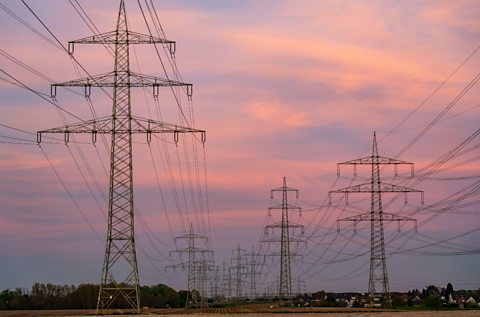
- count5 of 12
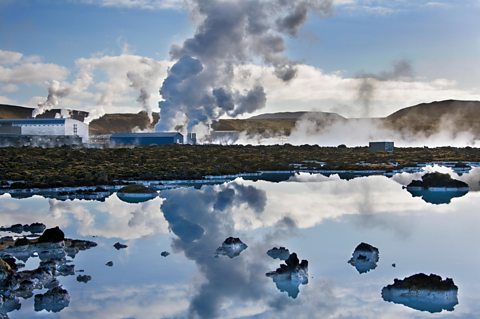
- count6 of 12
